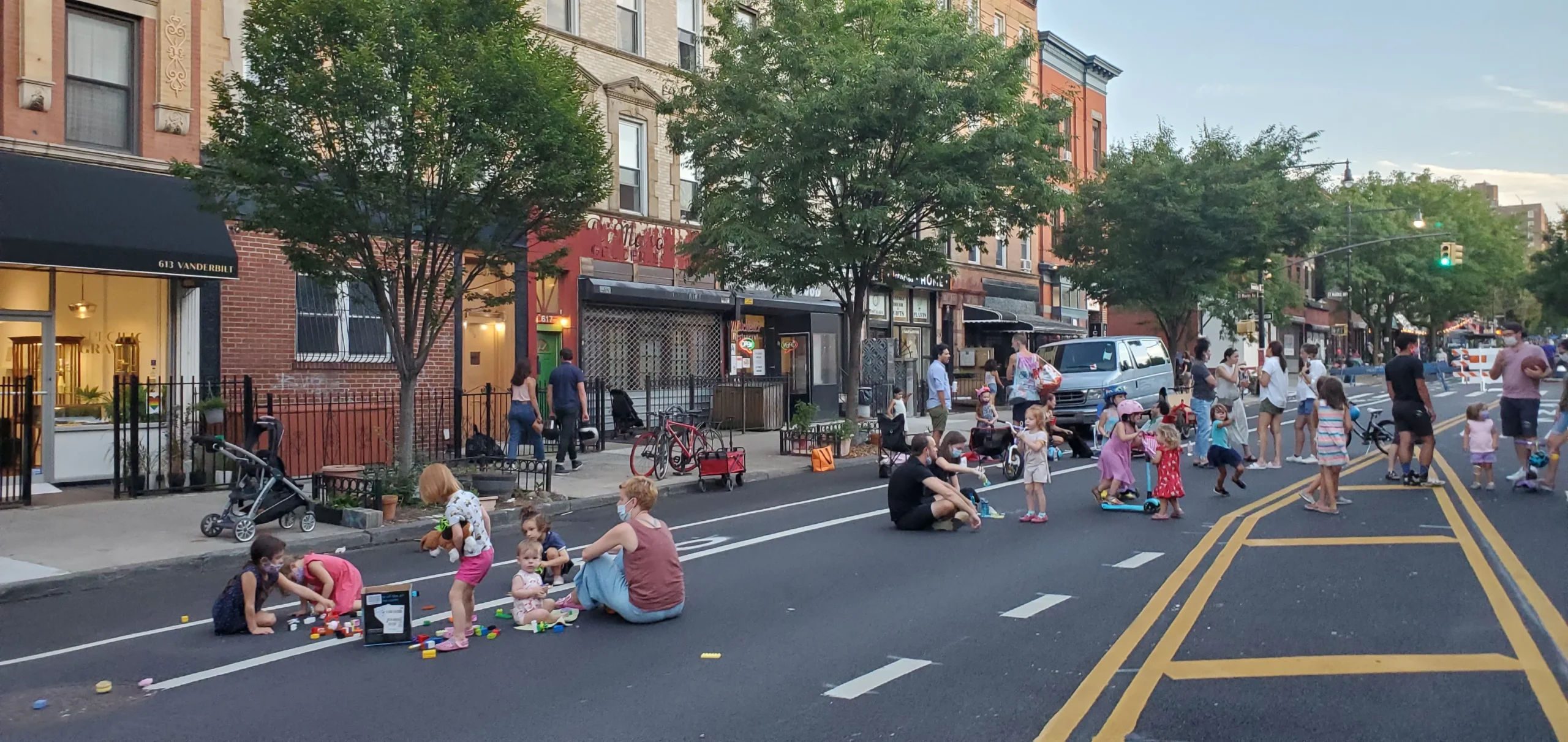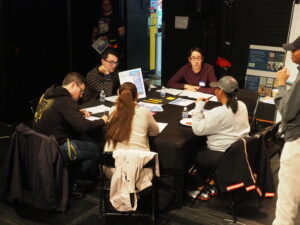In 2020, people worldwide were suddenly confined to the limits of their homes and essential places for an indefinite amount of time. This was especially difficult for urban dwellers, many of whom live in apartments and have little private outdoor space. Yet, as COVID-19 continued, many yearned for safe spaces to gather and connect, so cities began exploring options. In some cities, the person-focused innovations didn’t last beyond the lifting of restrictions, but many cities not only maintained their COVID-era changes but have continued to expand upon them.
The COVID era has allowed people to understand that urban design is far more than a mere arrangement of buildings and infrastructure. This intricate interplay of elements consequently affects our mental well-being. Whether through smaller engagements like public hearings or larger, more structural projects, urban design can shape our mental health.
Community Engagement
Community engagement stands at the heart of thoughtful city planning. When designing urban spaces in a city, it is important to consider what the community wants the space to look like, literally and figuratively. Conducting community outreach through surveys, public meetings, and events ensures that residents’ needs are met throughout the design process. This collaborative approach ensures that designs are responsive to residents’ preferences and fosters a sense of ownership and belonging among users. Through inclusive design practices, cities can create environments that promote social cohesion, aiding mental well-being and fostering a sense of collective pride and identity.
Observing Usage Patterns
An essential aspect of effective urban design is the observation of usage patterns – the informal pathways and behaviors that reveal how inhabitants interact with their environment. Desire lines are a key example of how observation can teach a planner a great deal about space. Desire lines, also known as desire paths and a host of other names, occur in publicly used spaces where a formal pathway takes a longer or more complicated route from Point A to Point B, so users carve out a shorter, simpler pathway. When designers formalize these usage patterns, it allows for creating spaces that are intuitively navigable and responsive to user needs – enhancing overall usability and user satisfaction.
The Less Visible Impact
While the aesthetic appeal of green spaces is readily apparent, their impact on mental health extends far beyond mere visual aesthetics. One of the biggest benefits urban green spaces have is reducing the heat island effect, where structures like buildings and roads absorb and re-emit heat from the sun and increase temperature. In urban settings, large heat islands form, encompassing entire neighborhoods and cities, and the temperature within can be 1-7℉ warmer during the day and 2-5℉ warmer at night than in less urban areas nearby. High heat can damage mental health, exacerbating stress and anxiety as people worry about how to safely go about their day and afford the intense cooling needed. This cooling, in turn, increases energy consumption and fossil fuel use, increasing pollutants in the air and dangerous carbon dioxide-filled smog, which then traps heat, maintaining the heat island. However, vegetation helps mitigate the heat island effect, reducing temperatures and enhancing air quality, further improving mental health outcomes. Therefore, heat-related stress and anxiety are reduced, improving the mental wellbeing of city residents.
Car Free Areas
2020 was something like a golden year for car-free areas. Many roads became car-free simply because most people weren’t traveling anywhere, and many more roads around the world were officially turned into car-free pedestrian zones. Some of these official and unofficial car-free roads have since been made permanent, though others are back to vehicle traffic. Among those that remain is a key thoroughfare in Queens, New York: 34th Avenue. Begun with the NYC DOT Open Streets initiative, a 1.3-mile section of 34th Avenue in Jackson Heights is closed to non-local traffic from 7 a.m. to 8 p.m. every day. Jackson Heights residents walk, bike, and play up and down the road, and food and clothing are distributed to those who need them regularly. 34th Avenue also plays host to classes, performances, and community events throughout the year. Locals call it ”the community center we never had” and say it allows them to stress less about their children. On top of that, according to Bloomberg, vehicle crashes involving pedestrians have dropped over 41% in the area, which makes people feel safer.
Across the country, John F. Kennedy Drive (also known as JFK Drive) in San Francisco, CA is another COVID-era car-free road that has been made permanent. 1.5 miles of JFK Drive in Golden Gate Park has been closed at all times since 2020, and now includes art installations, seating areas, and play areas. Scheduled family programming, presented by the Golden Mile Project, draws many San Franciscans. with murals and art installations, pianos and stages draw performances, both spontaneous and scheduled, 100 golden Adirondack and Fanback chairs invite passersby to take a seat and enjoy the park. In 2022, after months of intense debate over the merits of a car-free JFK Drive, San Francisco voted to keep the 1.5-mile section closed to cars permanently.
In Sweden, the Street Moves project, launched in spring 2020, has created innovative, person-focused street spaces. Designed by ArkDes, the Swedish Centre for Architecture and Design, and Stockholm-based LundbergDesign, customizable modules have been installed on streets in seven municipalities across the country. These modules can include seating and play areas, bike racks, planter boxes, and more, depending on the needs of the specific community. Each module is different, in keeping with Street Moves’ focus on developing place-specific modules and methods through collaboration with municipalities, citizens, and local design teams. By fostering community dialogue and engagement around the spaces, Street Moves integrates the opinions and needs of the people who use the streets into the design.
Conclusion
Although the effect of urban living on mental health is a much-debated topic, it is clear that thoughtful urban design can play a pivotal role in creating positive differences. The projects sparked from COVID’s initial outbreak in 2020 continue to live on, speaking to the importance of continuing to adapt, grow, and listen as we create more mindful cities.






